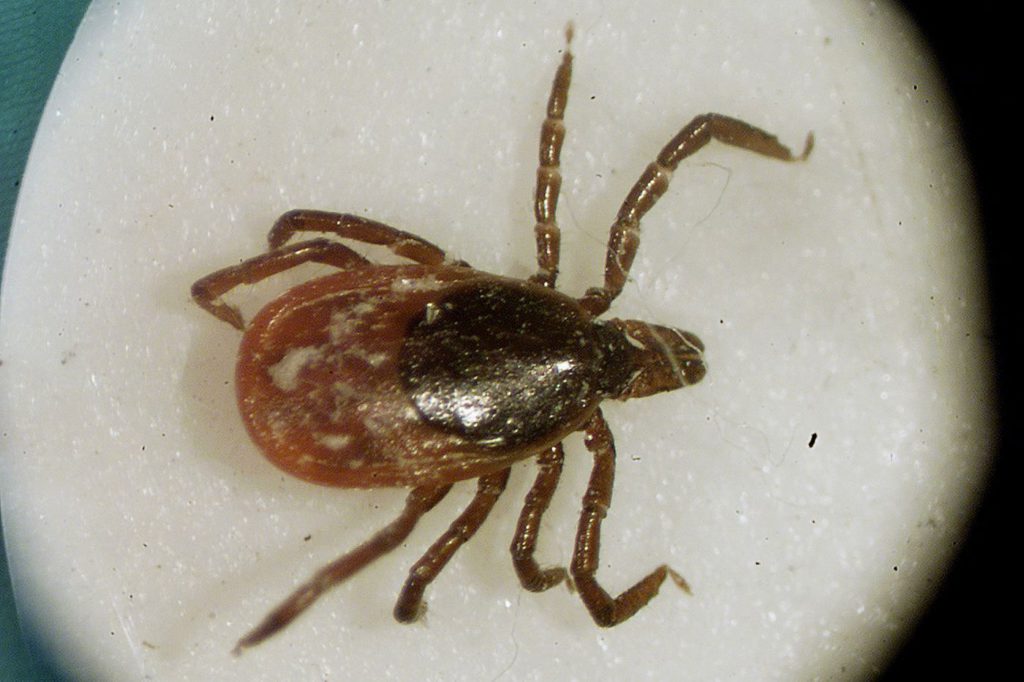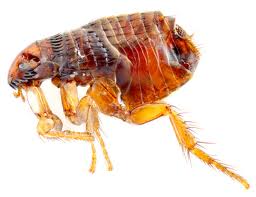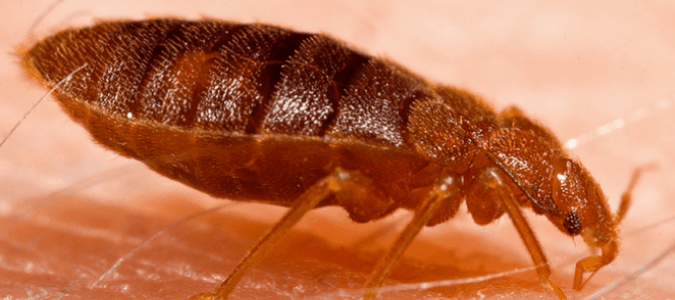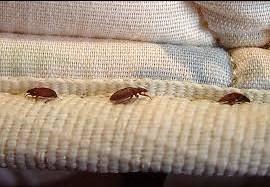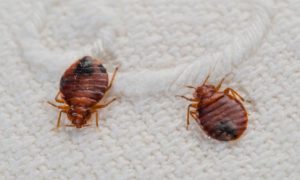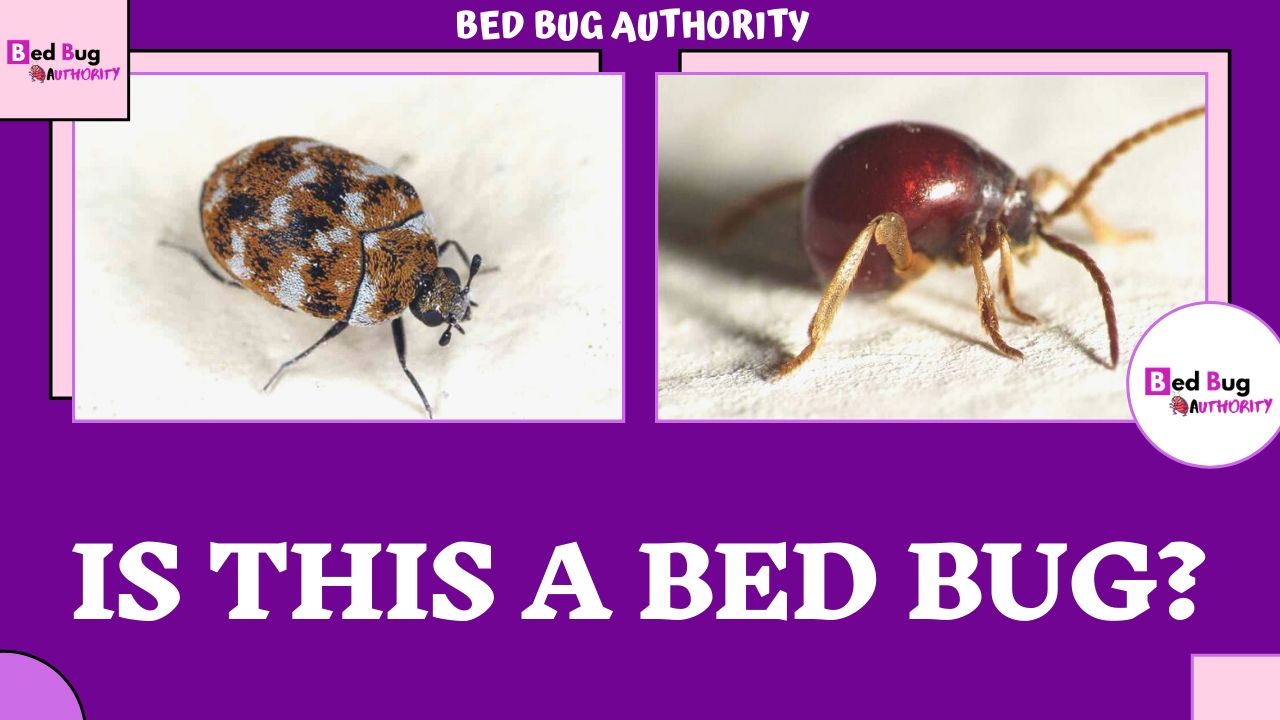
ARE YOU SURE THESE ARE BED BUGS?
If you see a small bug in your bedroom, your first instinct might have been to assume that it is a bed bug. This is not always the case because there are other bugs that look like bed bugs. While the full list could be long, on the shortlist are fleas, immature roaches, booklice, carpet beetles, bat bugs and ticks.
So let’s see, how can you tell if that tiny unwanted visitor is really a bed bug? Here are a few characteristics of bed bugs that can help you know if you do have a blood-sucking visitor in your bedroom:
Adults Bed Bugs are reddish-brown to black.
A bed bug that hasn’t had a blood meal recently is usually oval-shaped and flat. After feeding, these parasites will swell up, become longer and change color to redder to match their food source—blood.
Newly-hatched bed bug nymphs appear translucent. Their color changes as they molt; they eventually become brown.
These pests are wingless and their body length is approximately a quarter to just under half an inch. The body width of an adult is just about the same as its length.
Bed bugs look like apple seeds after feeding.
Now with that description, we’ll see these look-a-likes and let you know what to do if you find these bugs in your home.
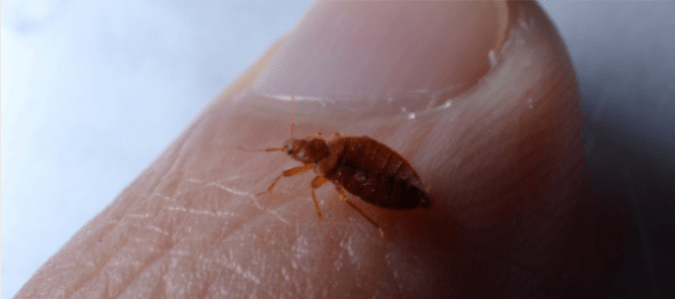
Are The Tiny Black Bugs In My Bed Bed Bugs?
If a bug has decided to make their way into your home or worse yet, in your bedroom, it’s natural for your brain to immediately jump to the conclusion that you have bed bugs. But there are several similar household bugs that might find their way into your sleeping quarters. Can you tell the difference? Let’s see.
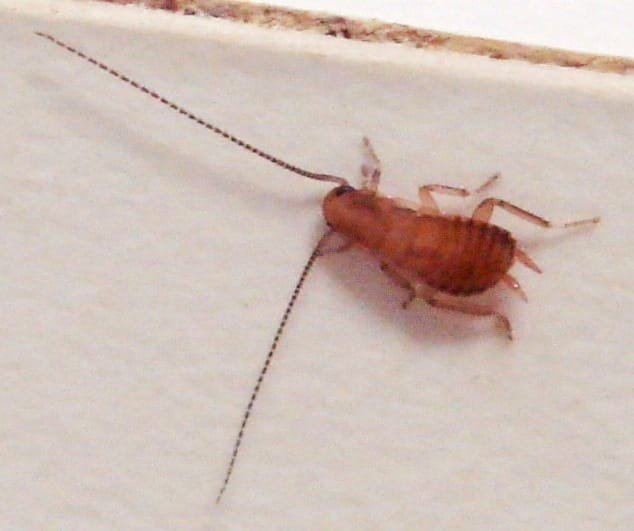
COCKROACH NYMPHS
Similar to bed bugs, these insects are often reddish-brown and can almost be the same size as an adult bed bug. To make even more confusing, these immature roaches like to hide in cracks and crevices, so you might find them in the same impossibly tight cracks in your bed that bed bugs might occupy.
However, unlike bed bugs, roach nymphs are usually cylindrical rather than oval.
When it comes to behavior, you don’t have to worry about getting bitten by a cockroach nymph. What you should worry about, though, is the fact that nymphs are newly hatched cockroaches and a red flag for possible roach infestations. Homeowners who want to know how to get rid of cockroaches often try home remedies before they seek professional help to resolve the problem. If you see a nymph—in your bed or otherwise—take action quickly to deal with the problem before your population multiplies.
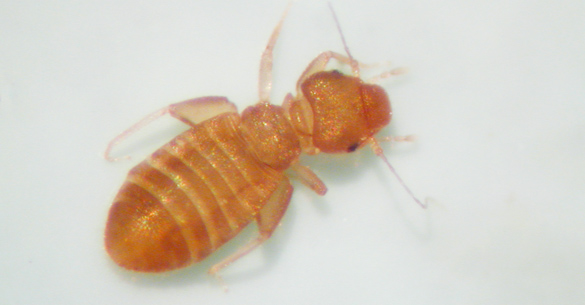
BOOKLICE
Booklice also goes by the name psocids, short for Psocidae, the family to which these insects belong.
In its younger (nymph) stage, a booklouse is strikingly similar to a bed bug. Adult booklice, however, differ from bed bugs by having a termite-like appearance. Their bodies are long and soft with thin antennae. They may also have wings.
Booklice like humid areas, and are quite attracted to damp books. If your bed or bedding is damp, you could find them nearby.
Contrary to what the common name might indicate, booklice are not true lice since they are not parasites. Why does this matter? A booklouse won’t bite you. It also doesn’t transmit any diseases to humans. However, if you feel like you’re being overrun, you can try vacuuming infested areas, reducing the humidity inside your house by opening doors and windows and discarding infested food.
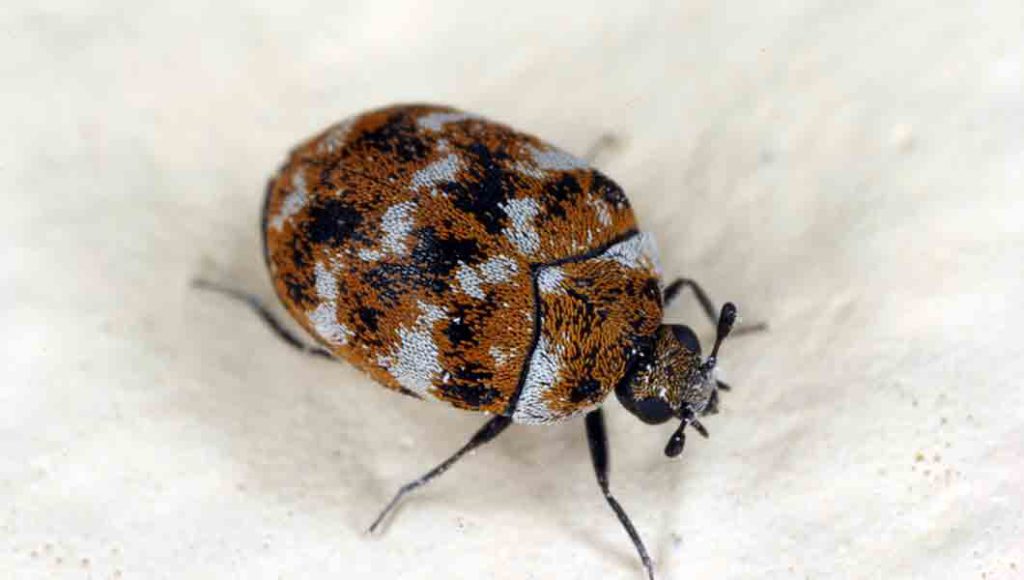
CARPET BEETLES
Of all the bed bugs look a likes here, the carpet beetle is probably the one that least resembles a bed bug, but we’re mentioning them because these bugs can end up in your bedroom. The antennae and hard exoskeleton are dead giveaways that it’s a carpet beetle in your home instead of a bed bug. The carpet beetle’s body is black or dark brown and may or may not have white patterns and reddish-orange scales. Their bodies also have tiny hairs.
Normally, these beetles are found on fabrics—especially, as their name says it, on carpet. These insects are often brought indoors on fresh-cut flowers. Even though a carpet beetle may stray onto your bed, there’s almost zero chance you’ll get a bit.
The bug can precipitate allergic dermatitis in sensitive people. Also worth mentioning: carpet beetles can eat and destroy your fabrics. The way to handle a carpet beetle infestation is similar to how you might deal with other unwelcome insect houseguests: frequent vacuuming and cleaning your floors, then promptly emptying what ends up in your vacuum canister in your outside trash. You can also inspect cut flowers to make sure you aren’t unknowingly bringing in some hitchhikers.
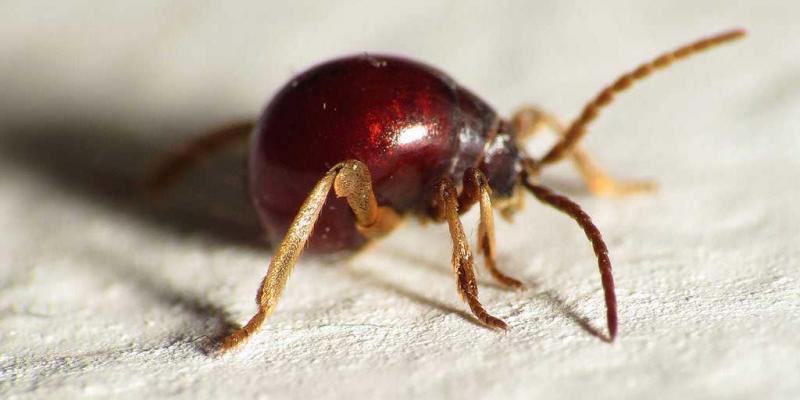
SPIDER BEETLES
Spider beetles—which are not spiders—are most commonly found in wooden structures, especially near places where food is stored. They resemble bed bugs in that they are oval and can be any color from brown to reddish-brown to almost black.
The main difference from bed bugs is their wings, the fact that they’re covered with hairs and because they have no “neck” (their heads connect directly to their bodies).
Spider beetles don’t bite, and they’re not considered a serious pest. The best way to keep these insects away is to remove infested food items. However, spider beetles are foragers that will go after all kinds of foods. So while you may clean out your pantry, you may not realize these beetles are feeding on insects within your walls, animal droppings in your attic or a nest in your crawl space.
These Small Black Bugs On Skin—Are They Bed Bugs?
To be honest: Those tiny black bugs on your skin are probably not bed bugs.
Bed bugs are for the most part nocturnal. They usually come out to feed at night and only if they think someone is resting or sleeping in bed. They won’t remain onto your skin after feeding, and they mostly attack those parts of your skin that are actually in contact with the bed or beddings.
It’s technically possible that you could find bed bugs hidden in or under your clothes, but that’s rare. So, what are those tiny black bugs you might see on your skin? There are a few possibilities.
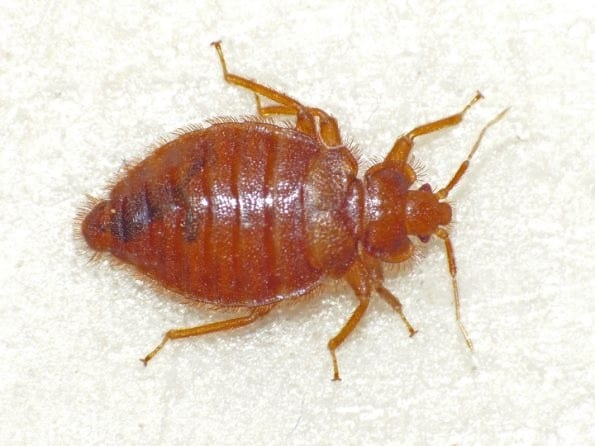
BAT BUGS
Scientifically known as Cimex pilosellus, found in North America, the bat bug is a very close relative of the bed bug. These two are difficult to tell them apart from each other by just looking at them. Bat bugs and bed bugs look almost identical in body shape and color.
The best feature to identify them is their hair; a bat bug has longer hairs on their upper thorax than those of a bed bug. It is very difficult, to see this difference without the use of a microscope.
Bat bugs are usually parasitic to bats. They don’t live on bats, but rather next to bat nests. Bat bugs invade human environments only when bats have been exterminated, chased away, or left their nests. This means unless you’re close to bat nests, you’re probably not going to see them.
What if you do have bats in your area? Or even just dealt with a bat infestation in your home?
They could be an issue, as bat bugs will bite humans and suck their blood if there are no other hosts nearby.
If it’s bat activity that has brought bat bugs into your home, you’ll also likely want to call in an experienced professional to relocate these winged mammals, since they pose health risks to humans. The good news is that bat bugs cannot reproduce in the absence of their preferred host, so any infestation you might have after moving bats off your property will likely be short-lived.
TICKS
Most of the tick species that are likely to invade your home are tiny. Most will have a reddish-brown appearance. That sounds a lot like bed bugs, right?
Well the biggest problems with bed bugs are usually that they’re annoying and really hard to get rid of. Ticks, in contrast, can transmit some dangerous diseases to humans.
When a tick bites to feed, they tend to cling onto the host until they are completely satisfied. If a bug just isn’t letting go, assume it’s a tick and do not try to pull it off.
Given the disease-transmission risk associated with ticks, it is highly recommended that you visit a health center as soon as you discover a tick on your body and have your home inspected to make sure there are no other ticks that may have made their way into your home.
Fleas: The Most Common Black Bug That Bite In The House
The most common blood-suckers that look like bed bugs and are most likely going to bite you at home are fleas.
And you thought they were just your dog’s problem, right.
How closely do fleas resemble bed bugs?
Measuring one-eighth of an inch, fleas usually look like minute jumping dots. They don’t have wings, are black to reddish-brown, oval and their bodies are flattened vertically.
Do you know what these two bugs have in common? The fact that they will both bite you and suck your blood.
If you’re getting bit at night and have a pet, fleas are probably the culprit. And if they’re biting you, there’s a good chance that things have gotten past the flea collar stage and you may want to call in a pest control company to pinpoint the source of your infestation and implement treatment measures both inside your home and out in your yard.
Questions To Ask Yourself
Still, having trouble knowing what you’ve been seeing? When determining whether the intruder was a bed bug or not, you may want to ask yourself a series of questions.
DID THE BUG BITE?
Check yourself for bite marks. Marks are one of the first telltale signs of a bed bug infestation. A bed bug’s bite leaves behind small, red, itchy bumps, rather similar to a mosquito bite. Of course, there are differences between bed bug bites and mosquito bites.
Also, there is a long list of other insects that can bite too, including a flea. Because of this, the next thing you should do is to examine its other features more closely.
WHAT COLOR IS THE BUG?
Looking closely, what is it you see? Read these characteristics to help you decide which bug is in your home:
A mature bed bug has a copper-brown color, while nymphs are translucent white.
A flea has a reddish-brown-to-black color.
A carpet beetle is black-brown.
A booklouse may vary in color, ranging from gray to light to colorless.
A spider beetle is reddish-brown.
WHAT SIZE IS THE BUG?
These differences can be hard to detect with the naked eye, but size can sometimes help confirm or deny what you suspect you’ve seen. Keep in mind that:
A bed bug measures between a quarter and almost a half-inch in length.
Fleas are a bit smaller, measuring about an eighth of an inch long.
Black carpet beetles are even smaller, reaching between one-eighth and one-sixteenth of an inch long.
Booklice are often too small to see with the naked eye, being at most one-eighth of an inch in length.
Spider beetles can measure in at anywhere between one-sixteenth of an inch and about a quarter-inch long.
DIFFERENT SHAPES OF BUGS?
The shape of the insect can aid identification.
Bed bugs are horizontally-flat, with an oval contour and four-segmented antennae.
Fleas are vertically-flat with an oval contour.
Black carpet beetles are oval with a tapered, hairy bottom.
Booklice have a ridged bottom and three body segments.
Spider beetles are a globe-shaped bottom and two body segments.
DO THEY HAVE WINGS?
Can they fly? Here are a few indoor insects to determine whether they have wings:
Bed bugs can’t fly
Fleas have no wings, but are great jumpers
Black Carpet Beetles have no wings.
Booklice can’t fly
Spider beetles do have wings.
WHAT DOES IT EAT?
One of the main reasons you noticed one of these tiny bugs in the first place is that you were probably bitten. Let’s take a look a the preferred food sources of these pests to determine whether they are likely to stick around our living spaces:
Bed bugs feed on blood, normally human
Flea feeds on blood, normally from mammals such as cats and dogs, but humans can also be a host
Black carpet beetles eat fabric, carpets, and stored foods
Booklice feed on mold and fungi
Spider beetles eat droppings, seeds, and whole grains
Get Rid Of Your Bug Problem
Of all the bugs we’ve described, bed bugs are likely the most resilient blood-suckers that you will ever deal with in your home. For that reason, it’s important to quickly handle any possible infestation before the problem becomes too big to handle.




